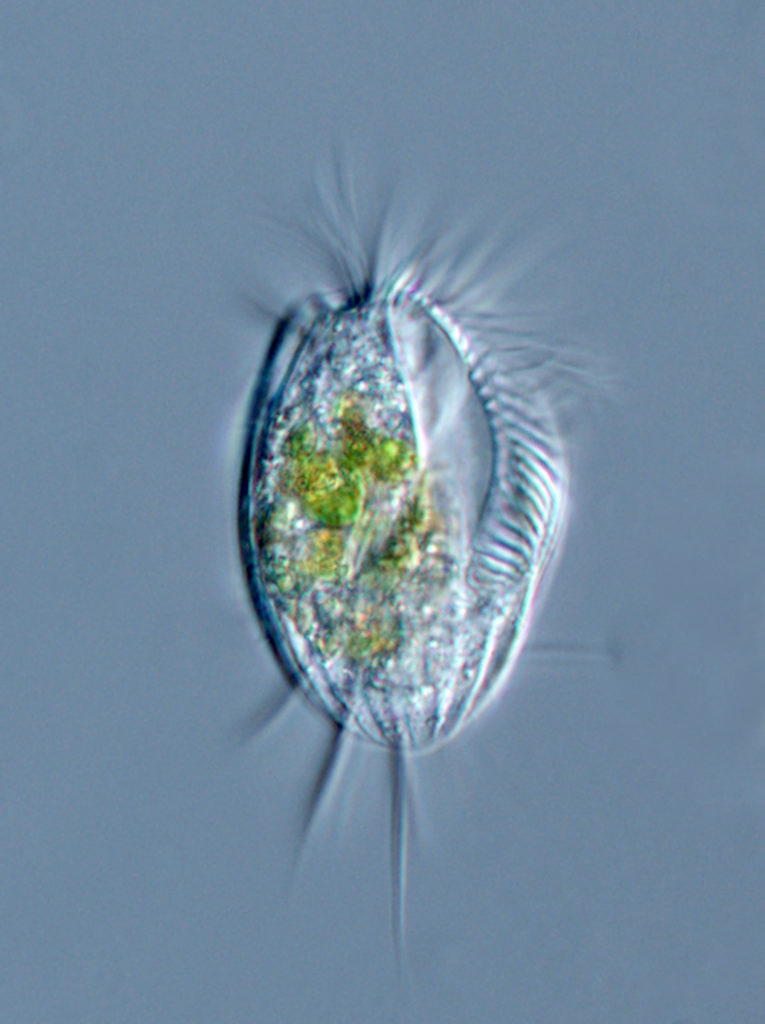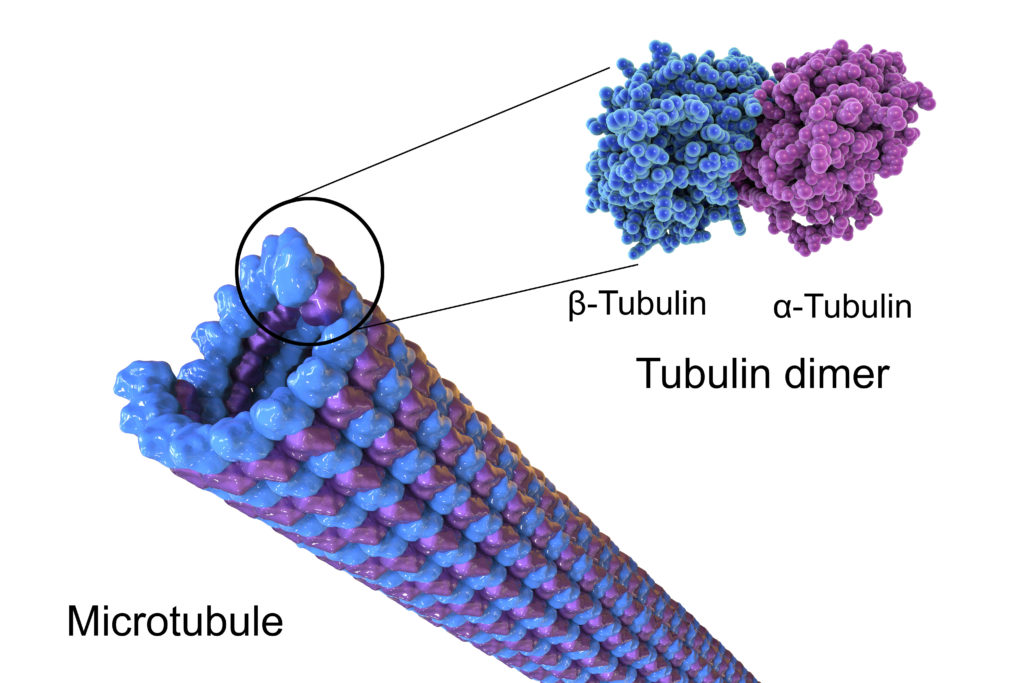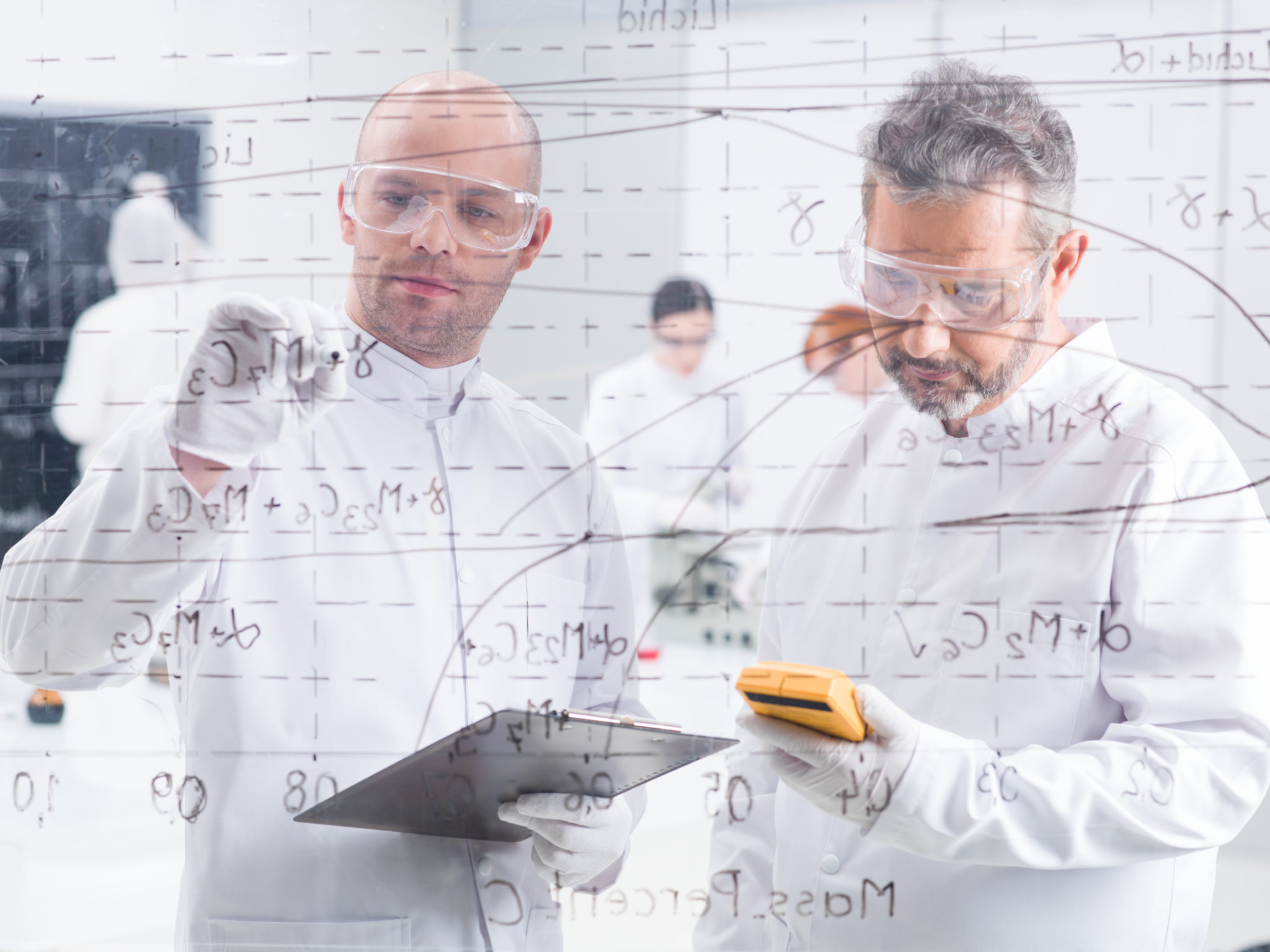Biochemical Finite-State Machines Point to an Infinite Creator
During my time as a graduate student studying biochemistry at Ohio University, I spent many long days—and nights—working in the laboratories housed in the Clippinger Building, home to the chemistry and physics departments.
Sometimes the only food I had available to me—particularly during those late nights that turned into the early hours of the morning—were the vending machine snacks in the common area of the second floor.
Unfortunately, the vending machine didn’t always work. It wasn’t unusual to walk into the common area to find someone pounding on the machine in frustration.
A vending machine is a physical instantiation of an abstract machine called a finite-state machine. (More on finite-state machines [FSMs] below.) Recently, a team of biophysicists at the University of California, San Francisco (UCSF) discovered that unicellular organisms belonging to the group Euplotes employ a biochemical FSM. This machine regulates the “walking” behavior of these single-celled creatures as they make their way across solid surfaces using leg-like appendages called cirri.1
This insight has far-reaching scientific implications, pointing to a general model that may explain the sophisticated behavior displayed by many different types of single-celled organisms. The work also carries significant philosophical—even theological—implications. It contributes to the revitalized Watchmaker argument for God’s existence and necessary role in the origin and design of life, as I first presented in my book The Cell’s Design.
To fully appreciate the philosophical significance of this discovery, a bit of background information on FSMs is in order.
Finite-State Machines
FSMs are considered to be abstract machines that mathematicians have devised to function as mathematical tools to model computational processes. Many real-world examples of FSMs can readily be found around us. In addition to vending machines (that take our money in return for a desired snack), other examples include turnstiles, elevators, traffic lights, and combination locks.
FSMs are defined by a set of states and inputs that trigger transitions from one state to another state (that may or may not be predetermined). An FSM can exist in any one of its defined states. And it can change or transition to another state based on a sequence of events or inputs presented to the FSM.
Of course, if the incorrect amount of money is inserted into the vending machine, it won’t change states because the input doesn’t match the predetermined value for input 1 or input 2.
In its initial state (I), the vending machine is stocked with snacks that have been placed in a rack, waiting to be dispensed. When a hungry customer puts the correct amount of money in the machine (input 1) and then selects their snack of choice (input 2)—usually by pushing a predetermined sequence of numbers and letters on the control panel—the vending machine changes states (from I to A), delivering the desired food item. If the customer types in a different sequence of numbers and letters (input 3), the vending machine will transition to a different state (from I to B), delivering the alternative food item.
An FSM can be thought of as a type of mechanical computer that has limited memory and is restricted by the number of states that define it. In some vending machines, the same sequence of events (inputs) can trigger a different set of actions depending on the specific state of the FSM. For example, if the desired snack item is no longer available in the vending machine, punching the prescribed sequence of numbers and letters will no longer trigger the transition from one state to the other—at least, in some vending machines—because in this initial state (I’), the vending machine is no longer stocked with the desired snack item and can’t transition from I’ to A.
A Biochemical FSM
I learned some valuable lessons during my graduate and post-doctoral studies. One is this: sometimes when things go wrong during an experiment, they can lead to a significant scientific breakthrough—if you are willing to pay attention.
Such was the case for Ben Larson, a molecular life scientist at UCSF. Larson became frustrated by single-celled predators that contaminated and invaded his experiments, eating the cells he was trying to study.2 Eventually, he discovered that the invaders belonged to the genus Euplotes. These single-celled organisms live in fresh and saltwater environments. They move around by swimming, but they can also walk on surfaces using appendages on their underside.

Figure 1: Euplotes
Credit: Shutterstock
Larson and two collaborators became interested in how Euplotes “walked” on surfaces. Their walking behavior is sophisticated and complex, reminiscent of the gait displayed by complex multicellular organisms with brains and nervous systems. In fact, the behavior of some single-celled organisms is so complex and sophisticated—seemingly directed by some type of internal control—that some biologists have gone so far as to speculate that single-celled organisms possess a type of rudimentary nervous system. But they don’t.
So, how does Euplotes coordinate the movement of its cirri as it walks along surfaces?
By carrying out a frame-by-frame analysis of videos of Euplotes walking along a glass surface (in which Larson and his collaborators mapped out the position of each cirrus and mathematically modeled the organism‘s movements), the investigators concluded that some type of internal control was indeed directing and coordinating the cirri movements.
They speculated that the internal control was exerted by a network of microtubules just beneath the cell surface. Cirri are composed of microtubules, which are small hollow tubules made of multiple copies of the protein tubulin. The tubulin subunits combine to form a molecular-scale tube. The arrangement of microtubules that form each cirrus extends into the internal space of the cell. These microtubules interlink with each other to form a microtubule network.

Figure 2: Microtubules
Credit: Shutterstock
When Larson and his collaborators disrupted the microtubule network, the coordinated movement of the cirri stopped. This finding implicates the microtubule network as the internal control regulating the behavior of the cirri. Based on the mathematical properties of the Euplotes gait, Larson and his research partners conclude that the microtubule network is a molecular-scale FSM—a mechanical nanocomputer. The microtubule network regulates the transition between a discrete set of gait states, with structural changes in the microtubule network corresponding to the different states of the system. Another way to think about the microtubule network is that it reflects an embodied set of computations that controls and coordinates the complex behavior of the cirri. Wallace Marshall, one of Larson’s collaborators, argues: “Our data shows you need microtubules for the computation to happen. The simplest explanation is that those are the computing elements.”3
The researchers think that this insight may have broad explanatory power. It may account for other sophisticated behaviors executed by single-celled organisms. That is to say, Larson and his collaborators think that an ensemble of FSMs may regulate several subcellular and cellular processes in which “decision-making” is required. Marshall concludes: “If you can make a computer out of microtubules, you can make a case for looking for them in many other cell types.”4
As remarkable as this insight may be from a scientific perspective, it is even more provocative when mulling over the philosophical and theological implications. To appreciate this point, we need to consider the classical Watchmaker argument advanced by William Paley.
The Watchmaker Argument
Eighteenth-century Anglican natural theologian William Paley (1743–1805) posited the Watchmaker argument in his 1802 work, Natural Theology or, Evidences of the Existence and Attributes of the Deity, Collected from the Appearances of Nature.
For Paley, the characteristics of a watch and the complex interaction of its precision parts for the purpose of telling time implied the work of an intelligent designer. Paley asserted, by analogy, that just as a watch requires a watchmaker, so too, life requires a Creator, since biological systems display a wide range of features characterized by the precise interplay of complex parts for specific purposes.
Biomolecular Machines and the Revitalized Watchmaker Argument
In the last couple of decades, biochemists have discovered many protein complexes inside the cell that are strict analogs to human-made machines with respect to their architecture, operation, and assembly. (For examples, see the articles listed in the Resources section.) The biomachines found in the cell’s interior reveal a diversity of form and function that mirrors the diversity of designs produced by human engineers. In many instances, this molecular-level biomachinery stands as a strict analog to human-made machinery. The one-to-one relationship between the parts of human-made machines and the molecular components of bio-machines is startling.
The discovery of biomolecular machines inside the cell imparts new vitality to the Watchmaker argument. The protein complexes inside the cell aren’t metaphorical machines—they are, in reality, actual machines. And Paley’s case continues to gain strength as biochemists continually discover new examples of biomolecular machines, such as the biochemical FSM made up of networks of microtubules.
Biochemical FSM and the Watchmaker Argument
The strict analogy between FSMs (which are both abstract entities and concrete real-world mechanical computers) and the regulatory behavior of microtubule networks in Euplotes is astounding—and provocative.
It goes without saying that when we encounter an FSM such as a vending machine, we recognize the design features of these devices. We also recognize that the decision-making capabilities of these systems were devised by intelligent agents. So, why shouldn’t we reach the same conclusion when we discover a biomolecular FSM inside the cell?
Resources
The Cell’s Design: How Chemistry Reveals the Creator’s Artistry by Fazale Rana (book)
“Does New Approach Solve Origin-of-Life Problem?” by Fazale Rana (article)
Biomolecular Machines and the Watchmaker Argument
“New Discovery Pumps Up Evidence for Design” by Fazale Rana (article)
“A Biochemical Watch Found in a Cellular Heath” by Fazale Rana (article)
“The Provocative Case for Intelligent Design: New Discovery Highlights Machine-Like Character of the Bacterial Flagellum” by Fazale Rana (article)
“Manufacturing the Case for Intelligent Design” by Fazale Rana (article)
“Electron Transport Chain Protein Complexes Rev Up the Case for a Creator” by Fazale Rana (article)
“Biochemical Turing Machines ‘Reboot‘ the Watchmaker Argument” by Fazale Rana (article)
Responding to Challenges to the Watchmaker Argument
“But Do Watches Replicate? Addressing a Logical Challenge to the Watchmaker Argument” by Fazale Rana (article)
“Self-Assembly of Protein Machines: Evidence for Evolution or Creation?” by Fazale Rana (article)
“Addressing the Concerns of a Critic and the Case for Intelligent Design” by Fazale Rana (article)
“Nanodevices Make Megascopic Statement” by Fazale Rana (article)
“A Cornucopia of Evidence for Intelligent Design: DNA Packaging of the t4 Virus” by Fazale Rana (article)
Endnotes
1. Ben T. Larson et al., “A Unicellular Walker Controlled by a Microtubule-Based Finite State Machine,” bioRxiv, preprint (June 17, 2021): doi:10.1101/2021.02.26.433123.
2. Michael Le Page, “Single-Celled Organism Has Evolved a Natural Mechanical Computer,” New Scientist, July 28, 2021.
3. Le Page, “Single-Celled Organism.”
4. Le Page, “Single-Celled Organism.“






